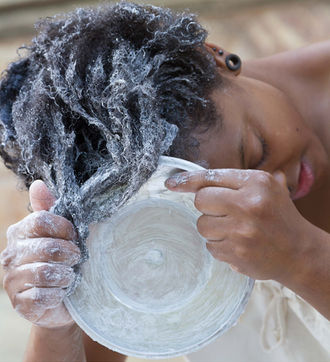
BIENNALS
CURATORIAL project
Entitled "Feminine(s): Visualities, Actions, and Affects," this biennial poses a question that addresses the central friction of contemporary democratic culture: the participation of society based on the concept of difference understood as multiplicity rather than separation, as expressed by Denise Ferreira da Silva.
It also takes as its starting point the questions posed by theorist Nelly Richard in her book Masculine / Feminine (1993), posed in the Latin American context of democratic transitions. Her questions address the social place of the feminine, its constructions, its incompatibilities, and the leap beyond exclusionary binary logics. These questions are fully relevant. Particularly at a time when the feminine revisits agendas unfulfilled since the 1960s, recapturing the questions of the 1990s, and amplifying their urgency as a consequence of increased violence against women and LGBTTQ+ groups; the rise in poverty and systems of exclusion and discrimination; and the critical and attentive observation of programs that attack the planet's natural resources.
It highlights the importance of creativity in challenging limits and constraints.
In this sense, it is inspired by a poetic phrase by Carolina Maria de Jesus, an Afro-Brazilian peasant, poet, and chronicler, who opened spaces between work and caring for her children to write. She wrote in the richness of the favela and despite the limitations imposed by (post)colonial racial violence. She wrote "Until the rain passes." Words and images were deposited on her paper, drawing territories that point to a possible freedom. Because writing explores the limits that circumstances impose on language.
Clarice Lispector likely alluded to these conditions of creation when she referred to the task of overcoming impossibilities: "Everything I know I cannot write," she wrote, naming the "luxury of silence." More than the obviousness of meanings, displaced in a time when they are reduced to commonplaces, in a flat communication, the biennial's exhibition diagram points to the attentive reading of an interpretative community capable of approaching a web of sensibilities and discourses that admit dissent as a springboard for argumentation and deliberation. Because, we know, it is necessary to speak, and to explore the different ways of naming to avoid uniform classifications.
It focuses on the proposals of women artists and all non-binary, fluid, non-normative sensibilities. Especially those that express themselves in their opposition to the most diverse forms of violence.
It is about engaging with the aspirations of the majorities to which many works direct us, and which include Afro-descendant and Indigenous artists, whose presence continues to evoke critical reflections in the art world, which, however, is exclusionary. It's about listening in detail and seriously addressing everything that stereotypes marginalize. All voices, from their heterogeneous responses and proposals, constitute culture.
It expands with the proposals of partner artists or allies, who share the desire for a less oppressive and discriminatory social order in terms of gender.
There are many poetics that inspire the design of a new symbolic and cultural horizon in which gender differences do not translate into inequalities or subordination. All stories need to be told and communicated so that narratives become plural.
It is enriched by the creations of those who work with materials and techniques traditionally attributed to feminine arts.
There is creativity in the ways of conceiving the common, from life experiences and everyday stories that must be heard as voices of a diversity without differences. Experiences that expand the expression of the community contribute to conversation, exchange, and the necessary reconstruction of a social fabric wounded by abuse and precariousness. This interaction generates exchanges from which we can imagine other forms of knowledge. All languages belong to us, without hierarchies of value or segregation of content.
It aspires to share the collective exercise of inventing new ways of doing, saying, thinking, and creating.
A platform that acts as a forum and a chorus of expressions and listening. It aims to function as a space that changes the traditionally exclusionary structure of symbolic and cultural representations that govern the art world. The educational dimension is central to creating territories for exchanges, debates, and encounters between the different audiences who will create their own biennials. The biennial proposes itself as a space for the collective celebration of thinking and creating together, to face with critical imagination the challenges of strengthening a democratic pact that broadens and diversifies the contours of citizenship.
Andrea Giunta
STAFF
Chief Curator
Andrea Giunta
Assistant curators
Dorota Maria Biczel
Fabiana Lopes
Curator of the
Educational Program
Igor Simões
ARTISTS
Access the Bienal 12 Online by clicking here .










